Zambales – the Philippines’ untouched beach destination
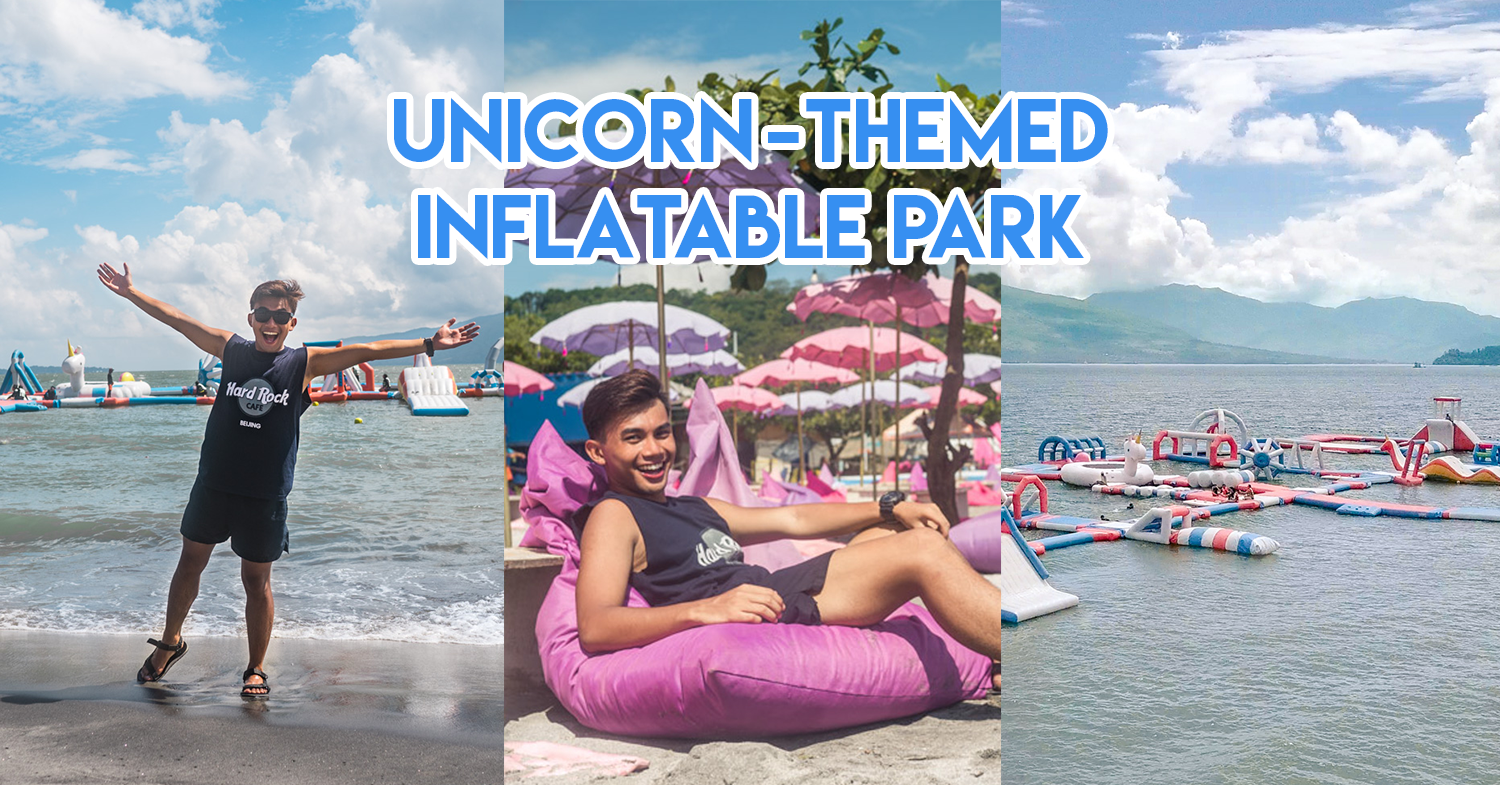
When pondering potential holiday destinations in the Philippines, you’d be forgiven for immediately conjuring up images of the bustling streets of Manila or the tranquil sunsets overlooking the isle of Boracay. And with the latter reopening soon, you can bet that beach-deprived tourists will be flocking back to its shores.
Affectionately dubbed the “Miami of the Philippines” by locals, Zambales is often overlooked by travellers to the country. Boasting an abundance of attractions that are relatively tourist-free (for now), here are 5 must-dos for your eventual visit.
This article is part of The $100 Nomad series, where we explore 10 cities for Singaporeans who are time-strapped and on a budget. These 3D2N itineraries cover lodging, meals and activities but do not include flights and transportation.
1. Inflatable Island – a unicorn-themed floating paradise
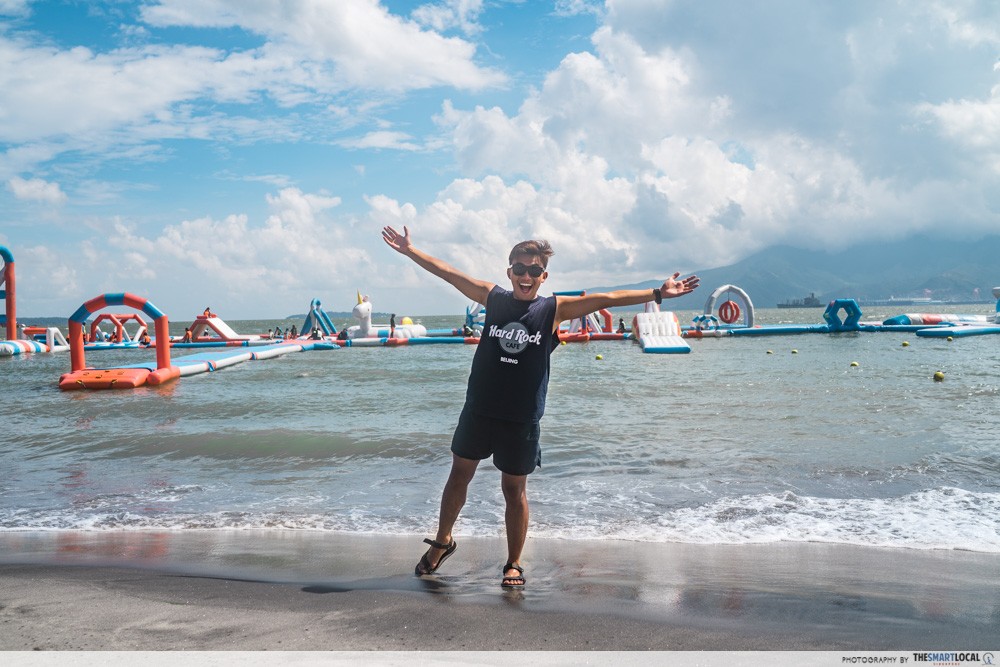
Inflatable Island is located on the waters of Subic Bay in the heart of Olongapo City, just a 3-hour drive away from Manila. The park spans an impressive length of 8 basketball courts, with several slides, towers, and even human launchers.
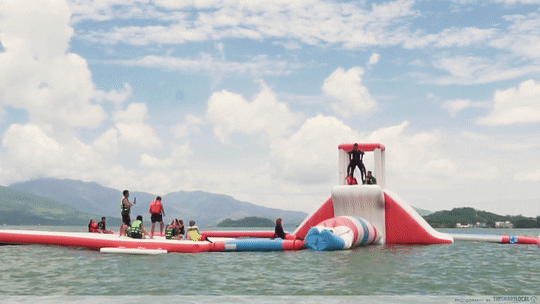
The park wasn’t overly crowded during our visit and comprised mostly of locals. We alternated between forays into the water and lounging in the shade while sipping on cheap cold beers from the nearby bar.
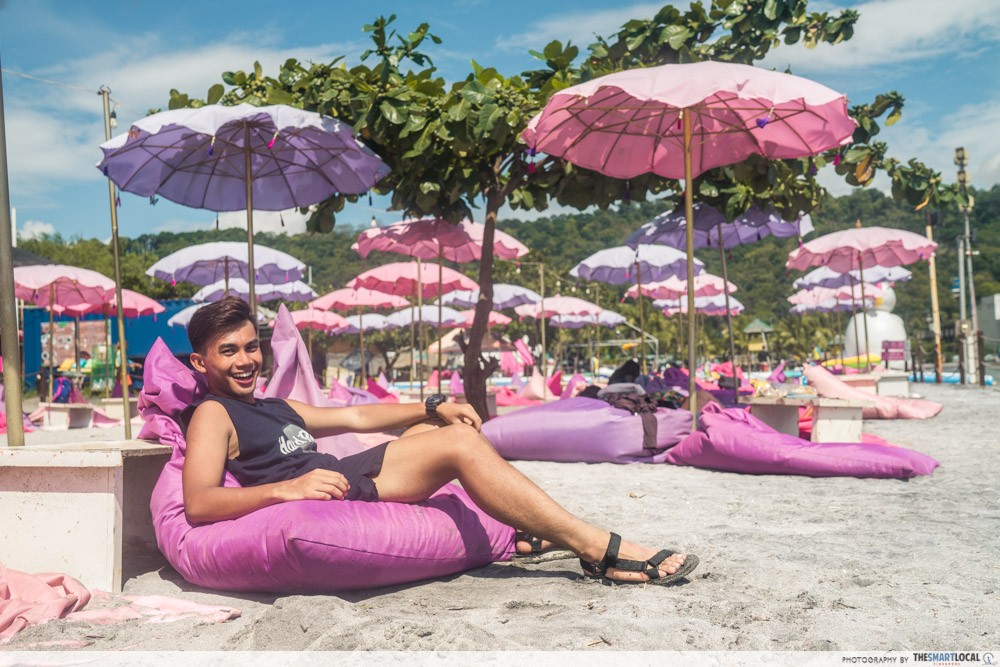
While there are several different timed tickets available, an unlimited full day pass here will set you back 849php (~S$21.80).
Note: If you’re thinking of making repeated visits to Inflatable Island throughout your stay in Zambales, you can consider staying at one of the park’s accredited hotels as they sometimes offer promotions and package deals. Visit their website for more details.
Address: National Highway, Subic Bay Waters, Lower Kalaklan, Subic Bay Freeport Zone, Luzon 2200
Opening hours: 8AM-6PM, Daily
Telephone: +63 917 713 7784
2. Surfing along Pundaquit Beach
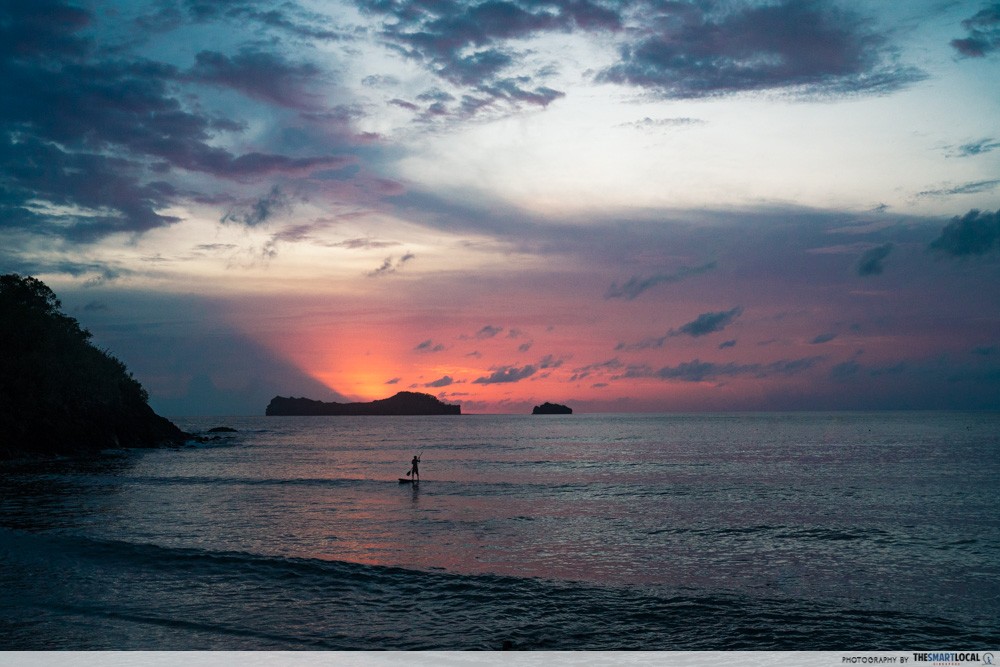
One of the most popular beaches in Zambales, Pundaquit Beach is known for its volcanic ash-carpeted shores that give the beach its signature white glow on sunnier days. With it’s warm, clean waters and swells suitable for all levels of surfers, this is one of Zambales’ surfing hotspots, offering beginners a non-intimidating taste of the surfer life.
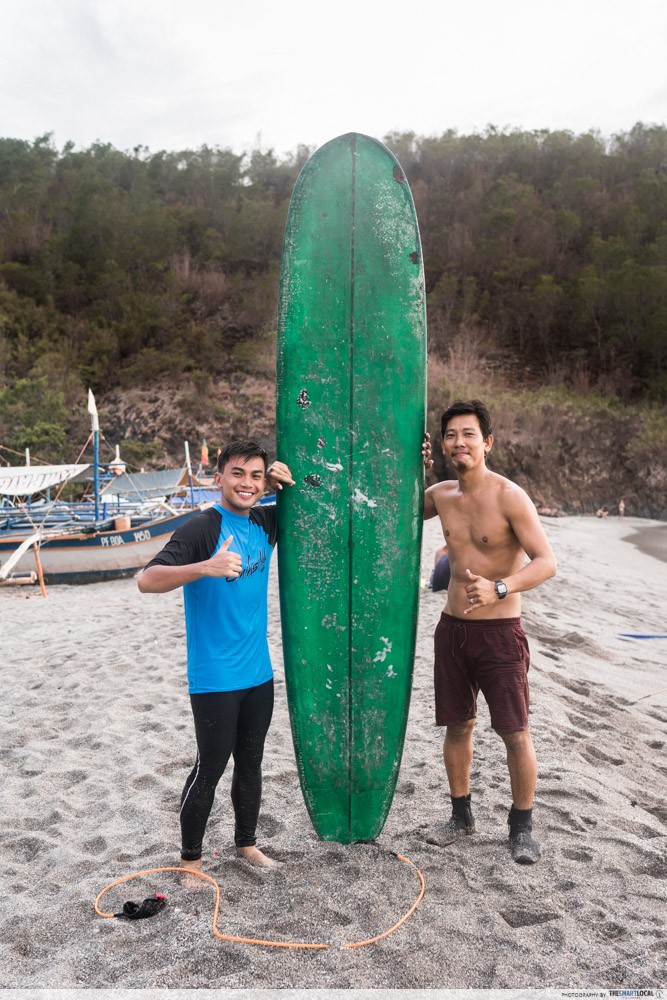
As there aren’t any physical surfboard rental stores around the beach, you’ll need to ask the locals for help to get in touch with one of the surfing instructors around the area. It didn’t take us too long to find an instructor as the locals are generally friendly with tourists.
Prices vary and are negotiable – we paid just 400php (~$$10.20) for a 2-hour surfing lesson with surfboards included.
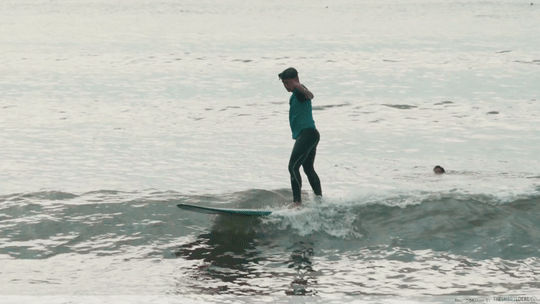
Before venturing into the water, our instructor gave us an on-shore demonstration of what we’re supposed to do. 15 minutes later, we were on the board paddling towards the waves under his supervision. Our instructor was extremely hands-on throughout, helping to identify which waves we should catch and calling out to let us know when to try and stand.
3. Island Hopping from Pundaquit Beach – explore an abandoned lighthouse
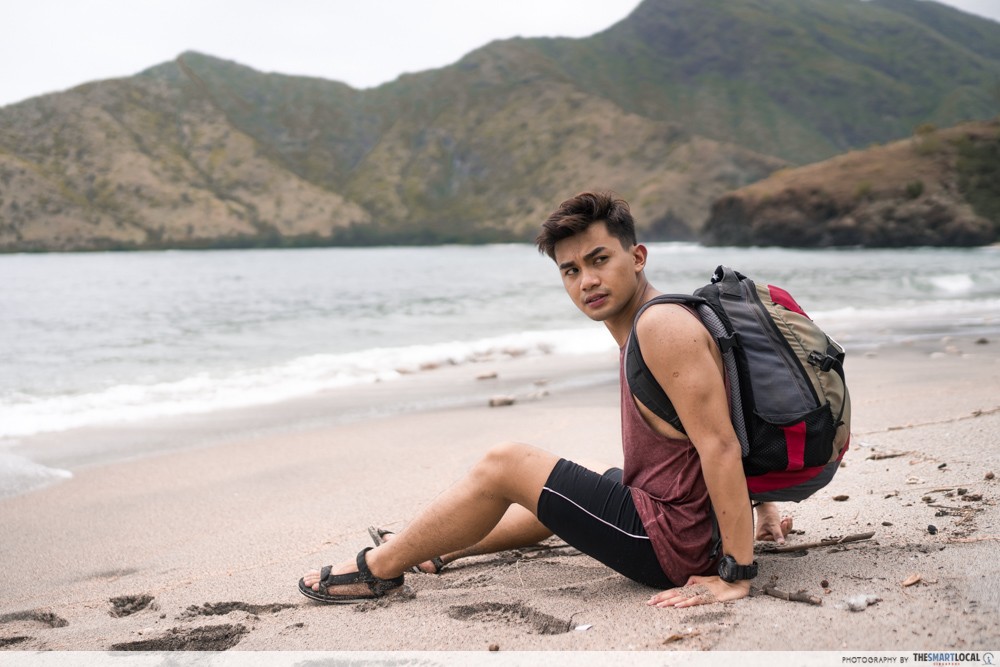
Aside from being a popular surf spot, Pundaquit Beach is also the jump-off point to many other places of interest in and around Zambales. With several smaller islands surrounding Pundaquit Beach, island hopping is an inexpensive way to explore some of the hidden coves and pristine beaches the San Antonio municipality has to offer.
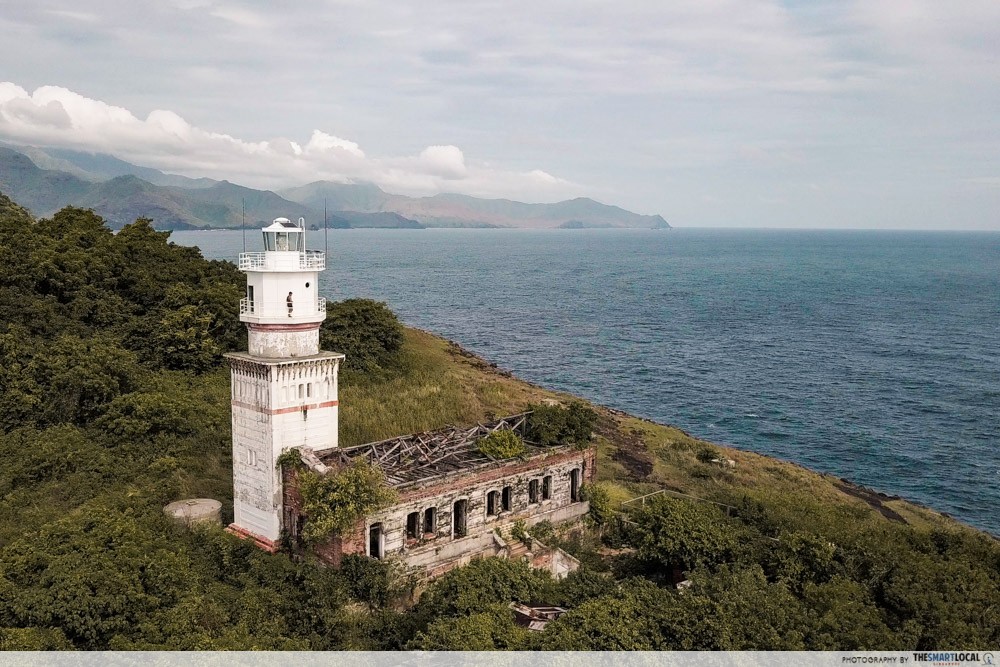
While Anawangin Cove, Nagsasa Cove, and Capones Island are all staples on island hopping itineraries in San Antonio, Capones Island stands out thanks to the presence of an abandoned lighthouse with unrestricted access.
Just an hour hike from the beach, the Capones Island Lighthouse is over a hundred years old and boasts a panoramic view of the island and its surrounding waters.
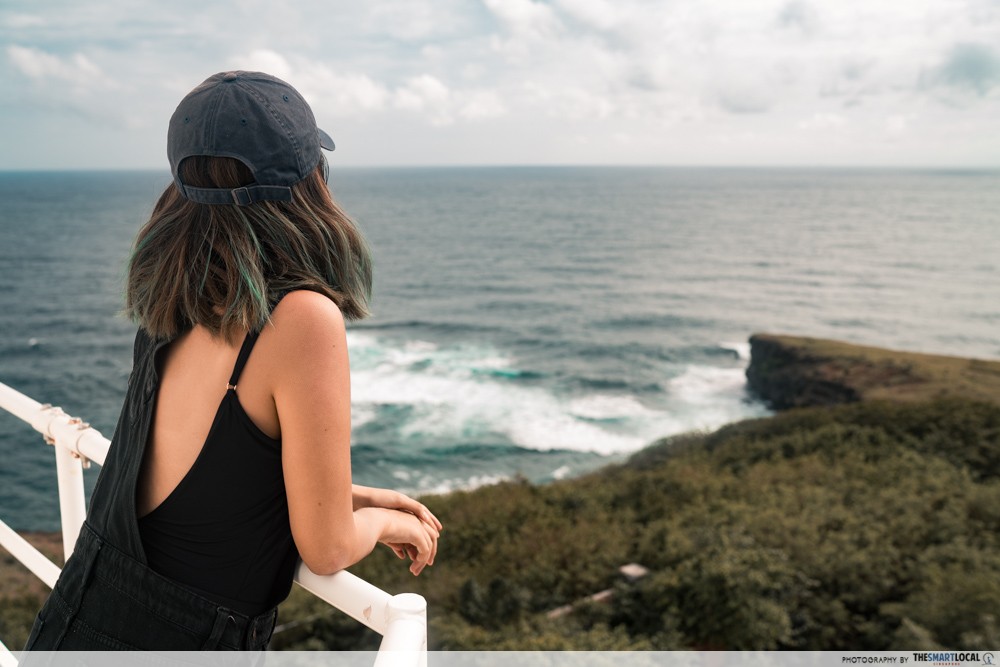
Similar to the surf instructors, you’ll need to take the initiative to approach the boatmen at Pundaquit Beach and let them know which islands you’d like to visit before negotiating the fee.
We rented a boat that could accommodate up to 10 people for 3000php (~$77.30), so the bigger your group, the less each person would have to pay.
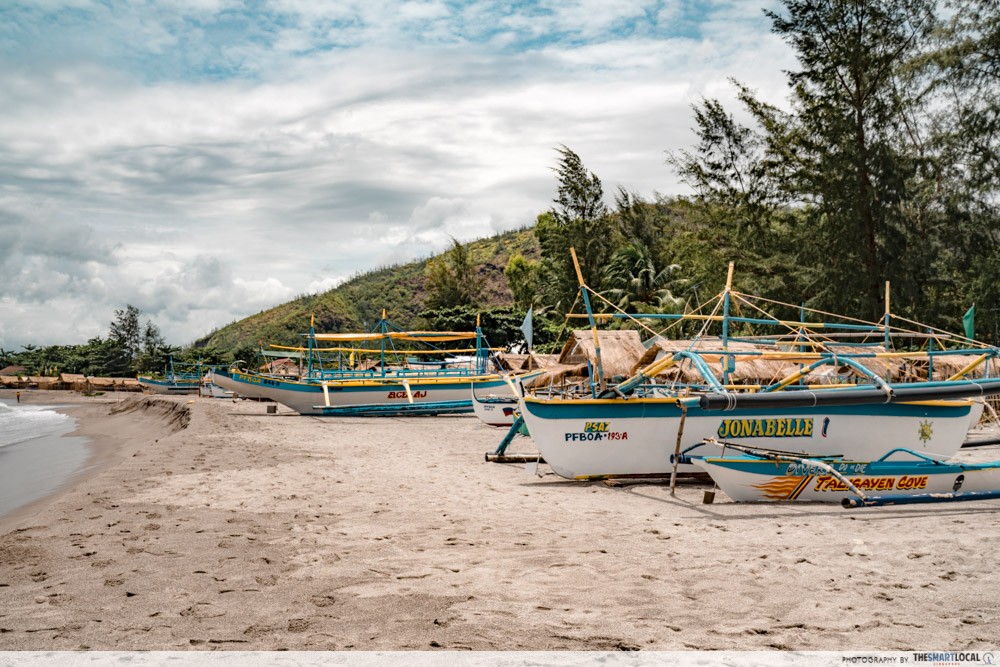
Note: There aren’t many proper food stalls around Pundaquit Beach, so if you’re planning on spending a full day island hopping or if you’re camping overnight on one of the islands, consider stopping by the San Antonio Food Market nearby for food. The islands can also get pretty crowded on weekends so consider visiting on a weekday especially if you’re planning on camping.
4. Mommy Phoebe’s Place – homecooked local food
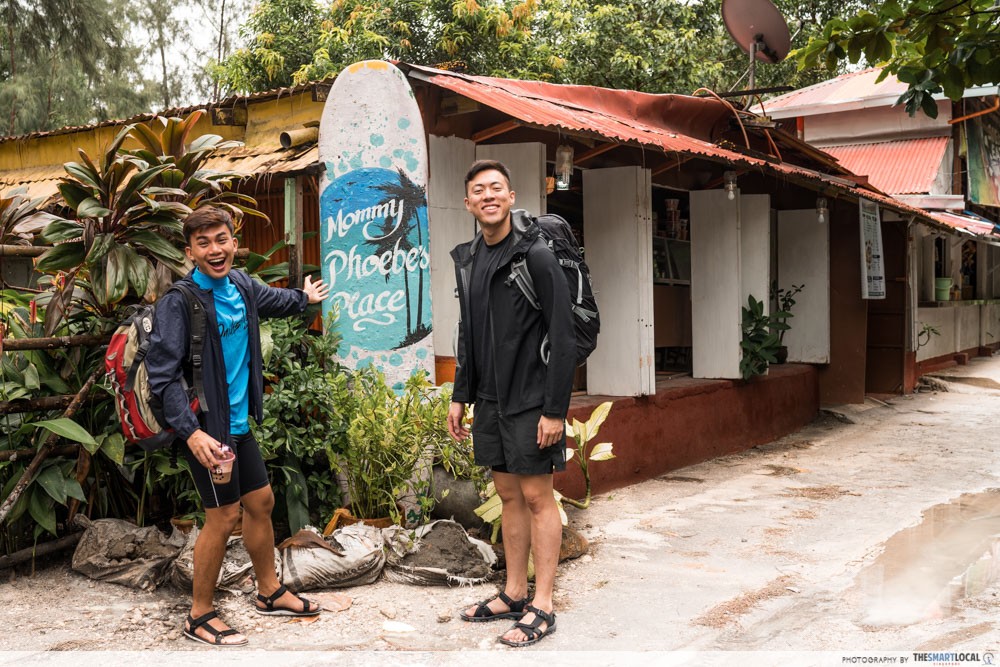
No trip to the Philippines would be complete without sampling their local fare, and there’s no better place to do that in Zambales than at Mommy Phoebe’s Place.
Situated right next to our hostel, Mommy Phoebe’s Place is a homely family-run eatery with no real fixed menu. Diners can choose to pick out dishes cai png-style or get made-to-order meals, with their bagnet (pork belly) and pansit (fried noodles) being crowd favourites.
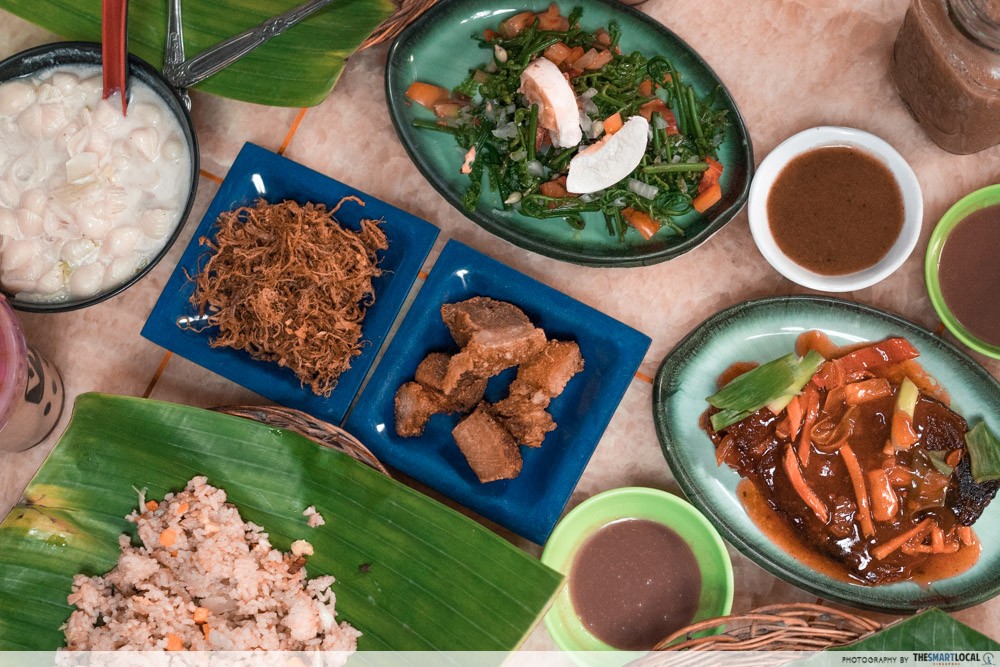
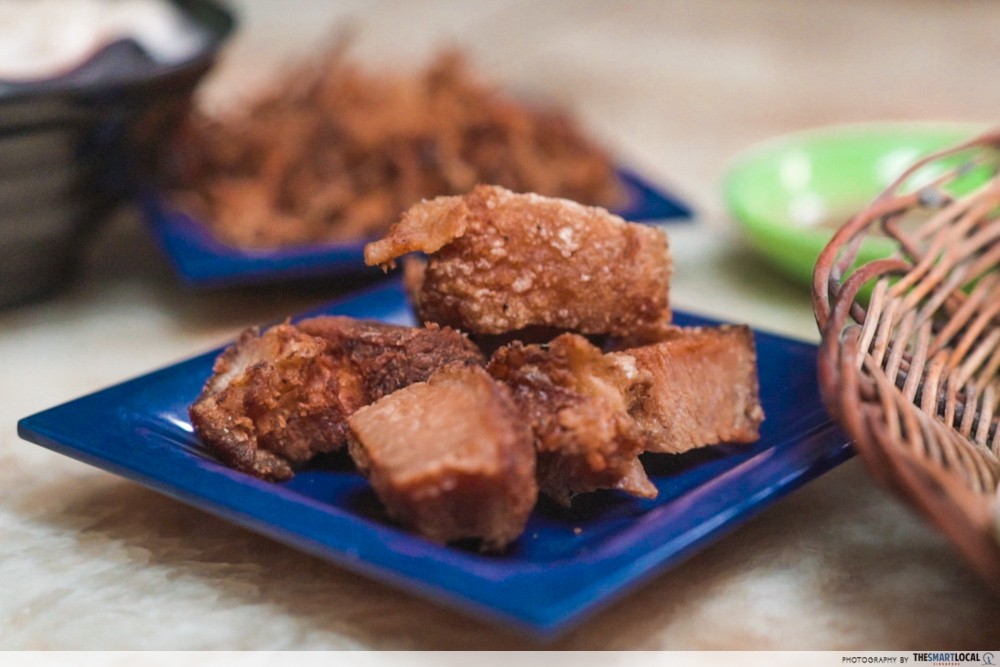
With their home-cooked meals, hospitable staff, and an interior that makes you feel like you’re dining in your grandmother’s home instead of a restaurant, it’s easy to see why this is the place locals flock to whenever they visit Zambales.
Address: Liw-Liwa, 2204 San Felipe, Zambales
Opening hours: 6AM-9PM, Daily
Telephone: +63 918 545 8007
5. San Felipe Public Market
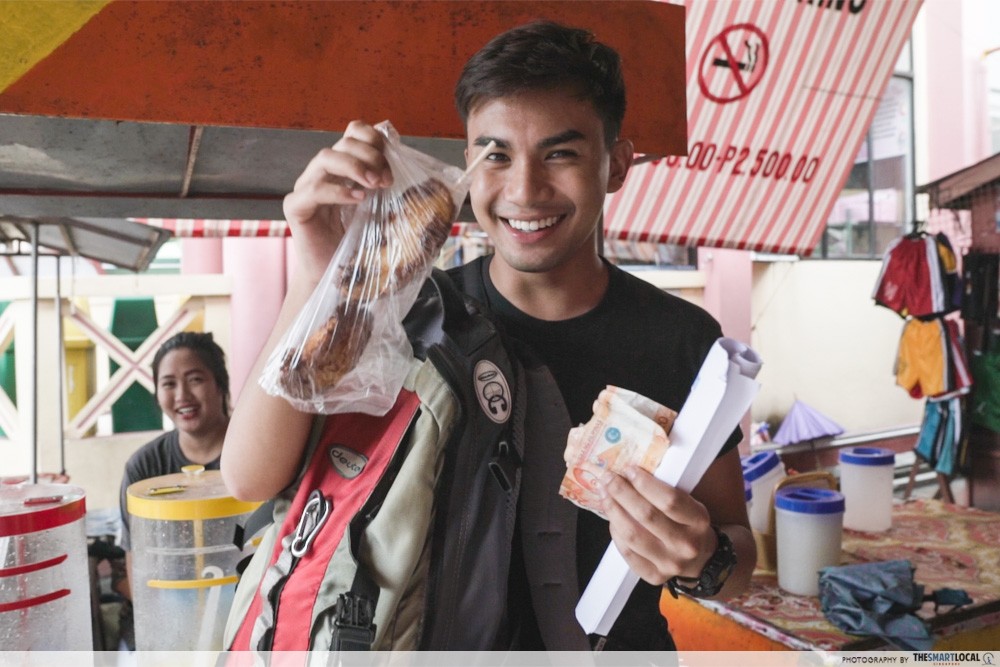
The San Felipe Public Mall is where the town folk go to get their hands on anything and everything. With stalls selling clothes, toys, and electronics on top of an entire farmer’s market with fresh produce, the San Felipe Public Mall is what you’d get if you crossed Bugis Street with Pasir Panjang Wholesale Centre.
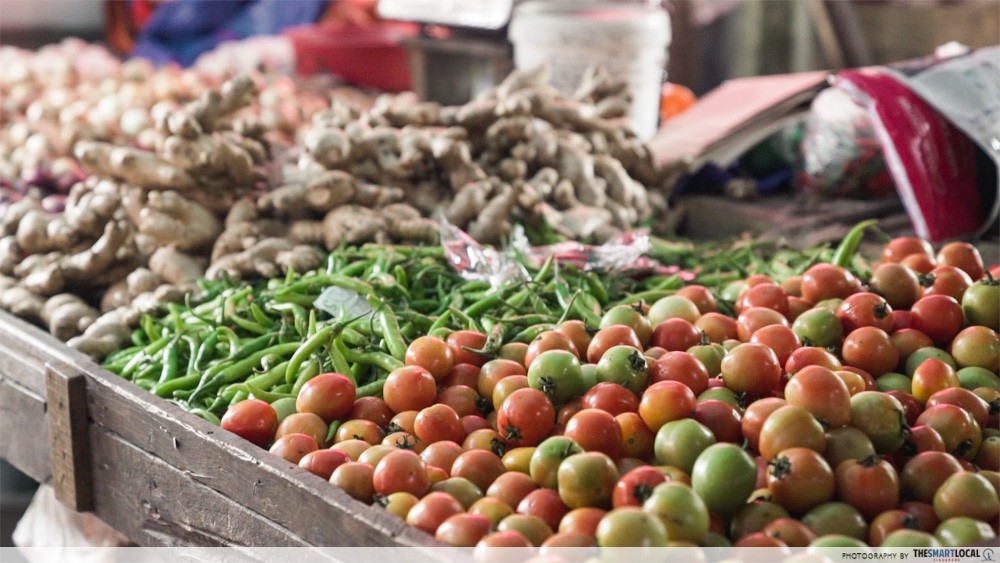
The market is also peppered with street food stalls hawking local snacks like banana cue (caramelised banana served on a stick), chicharrón (fried pork rinds), as well as the legendary balut (half-developed duck embryo eaten from the egg).
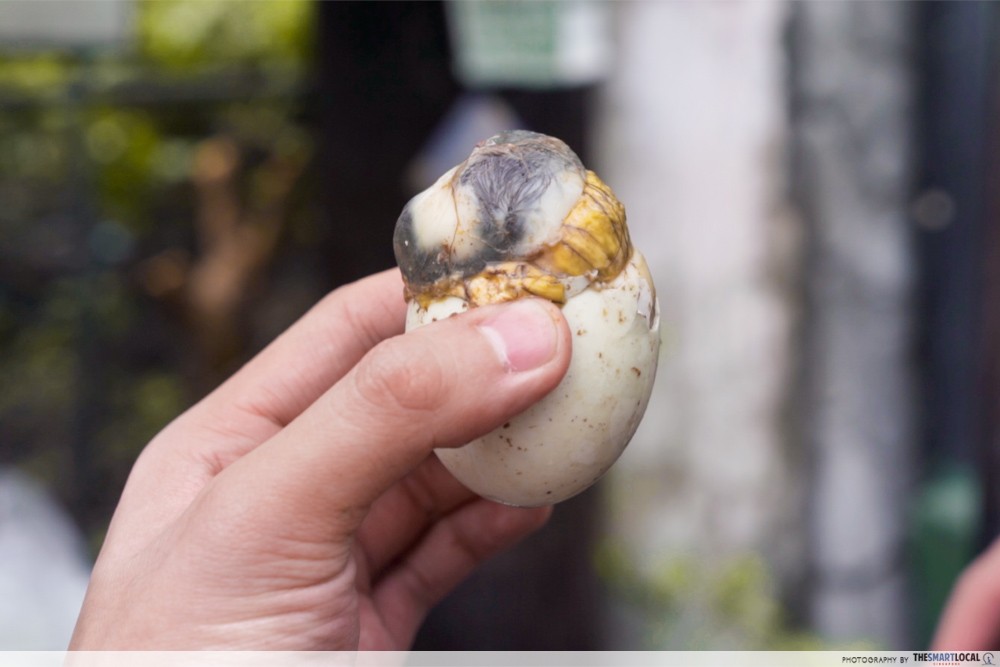 Balut!
Balut!
Despite considering myself a daring foodie, I was very apprehensive about eating a half-developed duck embryo. Beyond its unappetising aesthetic, there was the overpowering smell of egg that made things worse.
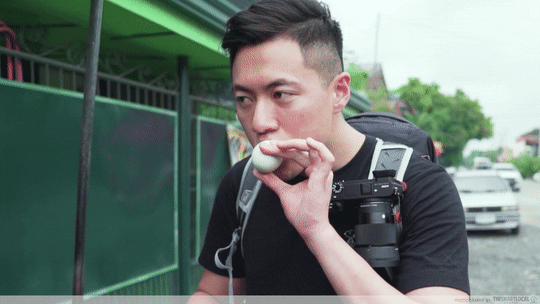
Balut is sold with the shell intact, and we were told to create a small opening in the shell to – I kid you not – suck out the juices before moving on to the bird itself. As revolting as that might sound, it turned out to be quite tasty and tasted a little like chawanmushi.
It took me another 2 minutes of deep breathing exercises and words of encouragement from my Filipino colleague, Julian, before I could take a bite of the duck embryo.
Texture-wise, it was like chewing on a very tender piece of meat, while the ‘meat’ was just more of that same salty chawanmushi taste sans mirin and dashi. Honestly speaking, if you don’t actually look at it, balut is pretty good!
*Bonus* Where to stay in Zambales: The Circle Hostel
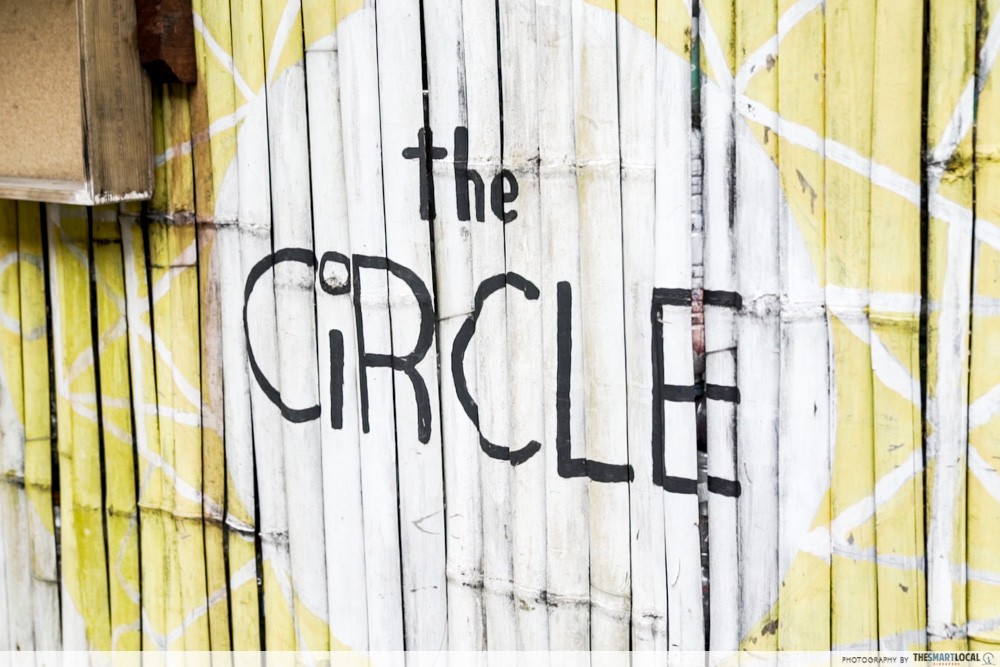
Location: Just a 10-minute drive away from the San Felipe Public Mall is The Circle Hostel. With several hostel branches across the Philippines, The Circle Hostel is located conveniently in San Felipe, right behind Liwliwa Beach, another popular surf spot in Zambales.
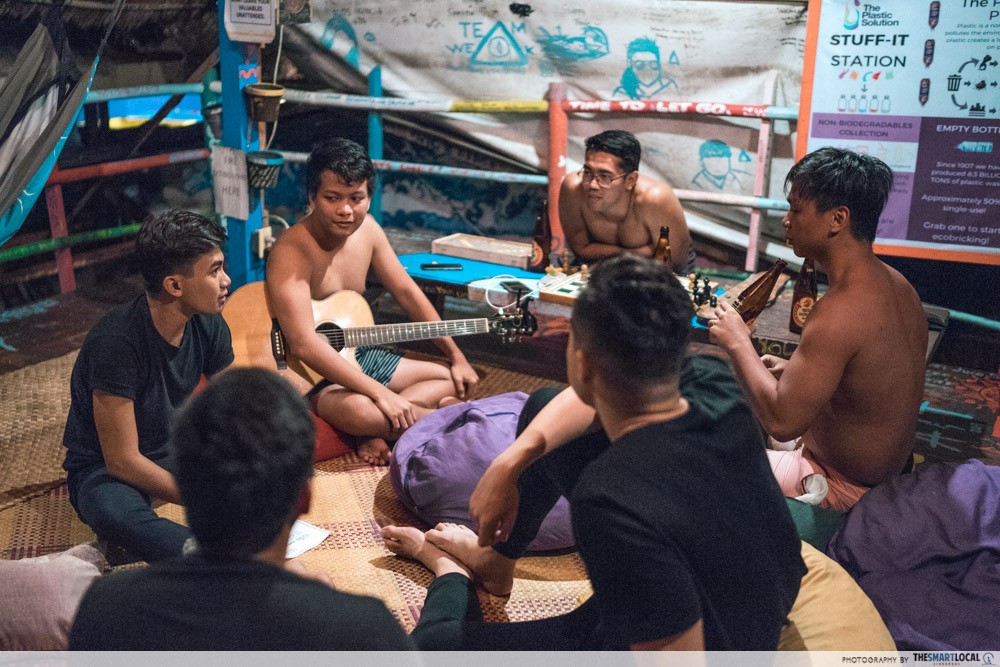 The Circle Hostel’s usual clientele are open-minded youths who aren’t afraid to make new friends. We bumped into a group of students on holiday and had an impromptu jamming session in the common area.
The Circle Hostel’s usual clientele are open-minded youths who aren’t afraid to make new friends. We bumped into a group of students on holiday and had an impromptu jamming session in the common area.
Guests can opt for a bed in a 16-pax communal bunk (there’s a female-only bunk as well) for 500php (~S$12.80) per night, a tent space on the ground floor (you’ll have to bring your own tent) for 250php (~S$6.40), or even a simple hammock for 250php (~S$6.40) if you’re the sort that can fall asleep anywhere.
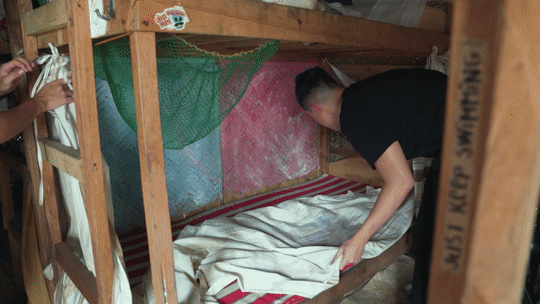
While the toilets aren’t exactly the most glamorous or spacious, they are relatively clean. The showers are installed with a proper heating system and decent water pressure too.
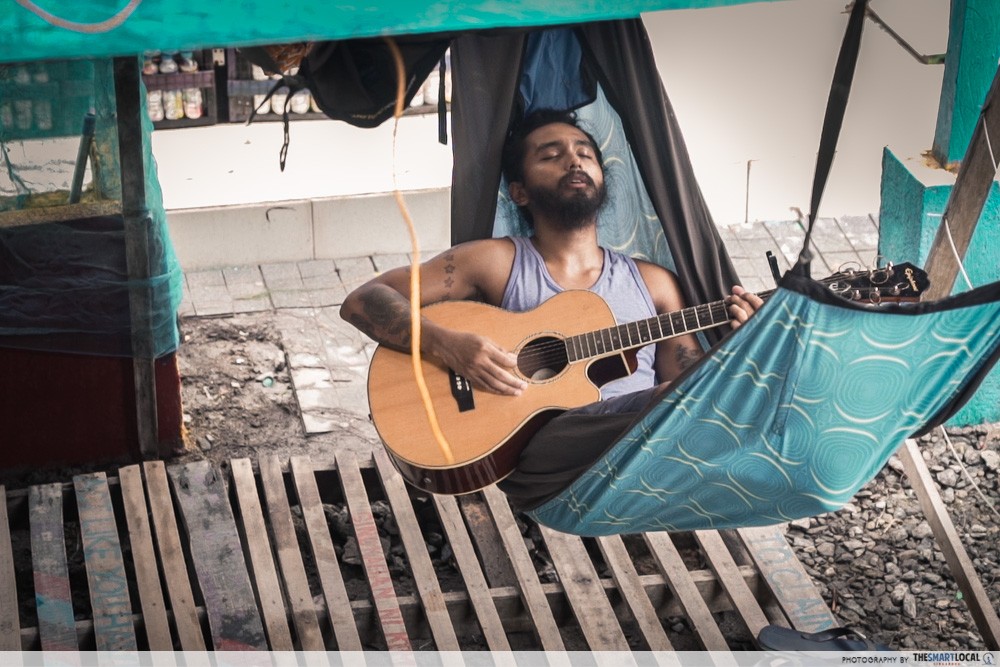
The hostel offers surfboard rentals and surfing lessons as well, with classes being conducted on Liwliwa Beach. Do note that this is dependent on the weather and tide when you’re there.
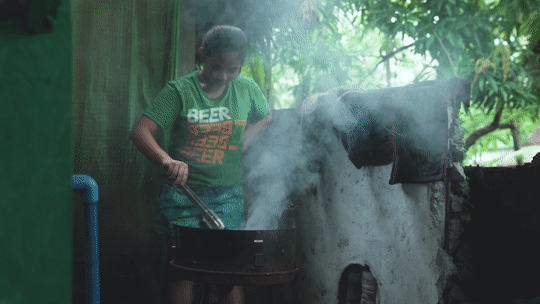
There’s also a barbecue pit that’s free for guests to use, so you can consider having a barbecue with produce from San Felipe Public Mall during your stay.
While The Circle Hostel doesn’t have many of the modern luxuries we’ve grown accustomed to, the back-to-basics lifestyle and warm vibes from the staff and fellow guests made this the perfect getaway from the stresses of everyday life.
Address: Sito Liwliwa, San Felipe Zambales, San Felipe, Zambales, Philippines
Telephone: +63 917 305 5391
Website
Zambales – non-touristy travel alternative in the Philippines
In just 3D2N, the above activities and attractions fell easily within a $100 budget (sans flight and transportation) while allowing us to disconnect from city life and get a glimpse of the chill surfer life romanticised by movies like Point Break and Blue Crush.
The $100 Nomad challenge is daunting in any city, but it’s safe to say that the task was much more manageable in Zambales. Being non-touristy, the place is still unaffected by “tourist markup” experienced by other well-known destinations in the Philippines.
Watch our full $100 Nomad adventure in Zambales here!!
Photography by Alison Tan.